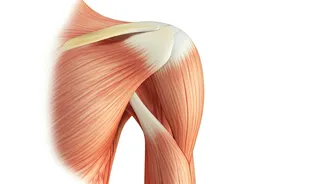Osteoporosis Unveiled
Osteoporosis, a condition marked by diminishing bone density and reduced new bone formation, is a significant health concern. What, then, is the primary
factor that elevates the risk of developing this condition? Bone density naturally decreases with age, making advanced age a major risk factor. Other risk factors include a family history of osteoporosis, being of small stature, and certain medical conditions or medications. Early detection and lifestyle modifications are important in preventing fractures and maintaining bone health.
Knee Joint Anatomy
The image presented showcases the knee joint, which is recognized as the largest joint in the human body. This complex joint is essential for movement and stability. To understand its structure, it's vital to identify the bones that compose it. The knee joint is formed by the femur (thigh bone), the tibia (shin bone), and the patella (kneecap). These three bones work in concert to facilitate the range of motion and support the weight-bearing functions of the legs.
Essential Nutrients
Maintaining healthy bones and joints hinges on adequate intake of specific minerals and vitamins. These nutrients play a critical role in bone formation, strength, and overall joint health. The primary mineral is calcium, a major component of bones, essential for their strength. Vitamin D aids calcium absorption, making it vital for bone health. Other key nutrients include vitamin K, which supports bone mineralization, and phosphorus, which works with calcium. A balanced diet ensures an adequate supply of these essential nutrients for optimal bone and joint health.
Osteoporosis's Height Impact
Osteoporosis can influence a person's height over time, thus leading to a noticeable reduction in stature. The weakening of bones, coupled with the increased risk of vertebral fractures, can result in the compression of spinal vertebrae. Over the long term, this compression causes a gradual loss of height. As the bones become less dense and less capable of supporting the body's weight, the effect becomes even more pronounced, highlighting the importance of prevention and early treatment of osteoporosis.
Uric Acid's Arthritis
High uric acid levels in the bloodstream can trigger a specific form of arthritis, known as gout. When uric acid builds up and crystallizes in the joints, it causes inflammation and pain. The crystals typically deposit in the joints of the big toe, leading to sudden, intense pain, swelling, and tenderness. Understanding the link between uric acid and gout is crucial for diagnosis and management, which often includes lifestyle changes, medications, and dietary adjustments to lower uric acid levels and prevent recurrent attacks.
Immune System's Attack
Rheumatoid arthritis is a form of arthritis where the body's immune system mistakenly attacks the joints. This autoimmune response causes inflammation, pain, and stiffness in the joint linings. Over time, it can lead to joint damage and deformity. The immune system, meant to protect the body, mistakenly identifies the joint tissues as foreign and attacks them. Treatment aims to alleviate symptoms, reduce inflammation, and prevent or slow the progression of joint damage. This often involves medication, physical therapy, and lifestyle adjustments.













